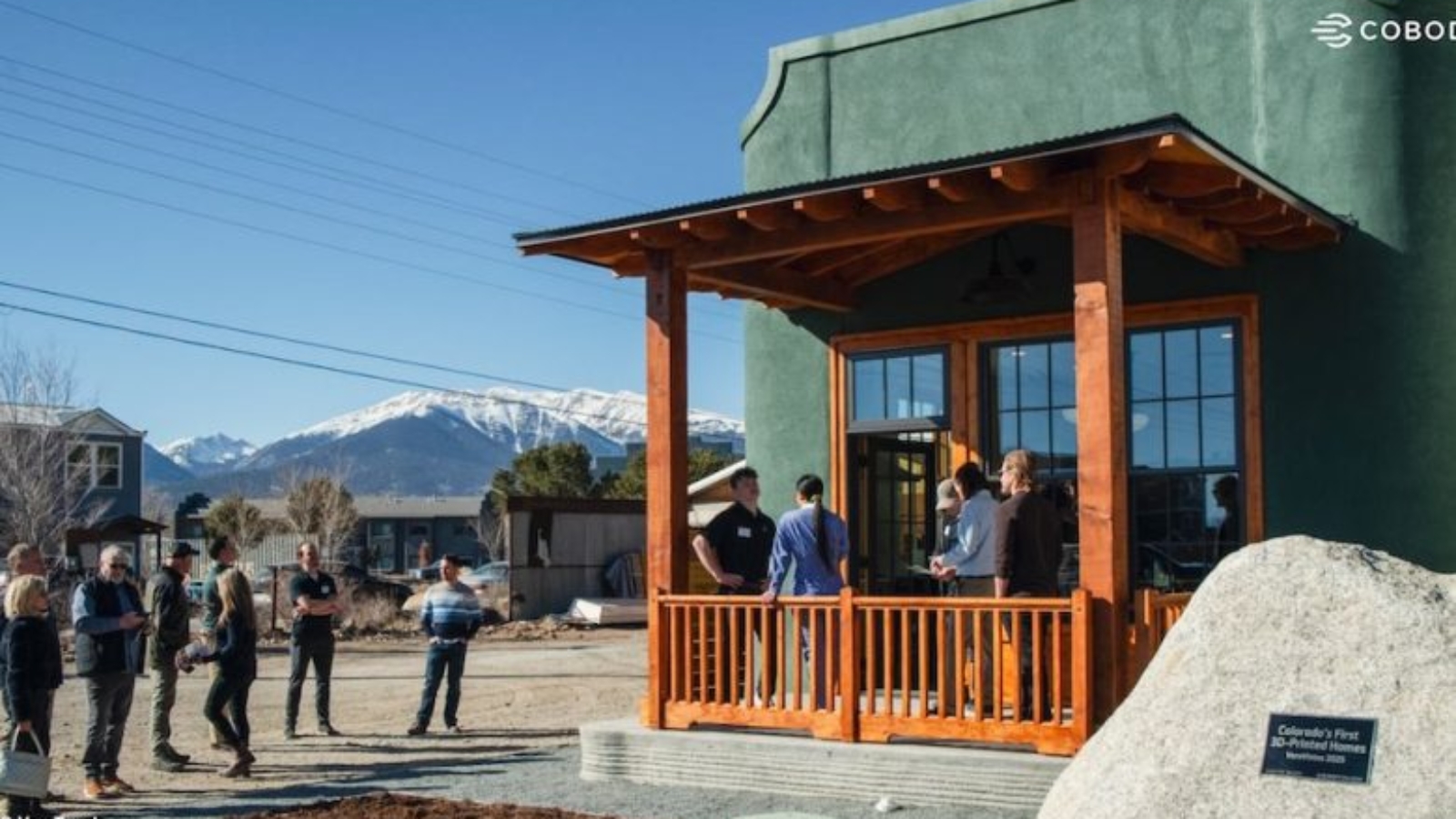Buena Vista, Colorado is a mountain town known for its incredible views (obviously) as well as its ideal location for hiking. The scenic community is, however, also increasingly at risk of wildfires. In fact, nearly half of Colorado’s population reportedly lives in regions that could be impacted by wildfires, a growing risk due to global warming. Ideally, this risk would be addressed through grand-scale policy changes, but in the absence of that, smaller scale initiatives are critical. One such initiative is being led by construction tech company VeroTouch, which worked with Buena Vista contracting firm South Main to 3D print a pair of fire-resistant homes.
Known as the VeroVistas, the two homes were constructed using COBOD’s BOD 2 3D printer and span 1,100 sq. ft. (102 m2) each. Most notably, they are made from an A1-rated concrete, the highest grade of fire resistant material which does not fuel combustion at any stage. This is in contrast to more traditional wood-framed houses, which are combustible.

The two homes are priced at about $625,000, pretty much in line with the average single-family house price in the state. In terms of their design, one of the houses has maintained the printed aesthetic, with layered walls, while the other has a more conventional look with a stucco finish. The second house’s superstructure was reportedly printed within just 16 days, minimizing construction times compared to more conventional approaches while also reducing the manual labor involved through the automated BOD 2 printing process.
Despite the fast build times, VeroTouch is confident its printed homes will last the test of time. “In an era of fast housing, VeroTouch is creating legacy homes that can be passed down, rather than torn down,” said Grant Hamel, VeroTouch’s Chief Executive Officer. “Beyond merely great design, we’re proud that VeroVistas homes offer a level of resilience to natural disasters like wildfires unmatched by any other product in this region. Because of that, we expect these homes to be standing strong 100 years from now.”
Manufacturing on Demand

With the completion of the first two fire-resistant houses in Buena Vista, VeroTouch has plans to create even more housing. Its next project, a 32-home community supported by Colorado’s Innovative Housing Incentive Program (IHIP), is already underway in Salida, Colorado. “We are proud to accelerate innovation in housing to better address Colorado’s housing needs,” added Governor of Colorado Jared Polis. “The unveiling of these 3D printed homes is a great example of how we can support new building methods to create more housing now.”
Philip Lund-Nielsen, co-founder and head of Americas at COBOD International, also commented: “3D construction printing provides a safer, more efficient and sustainable way to build. Colorado investing in broader application of 3D construction printing shows that this scalable method can help address the housing crisis, not only in Colorado, but across the U.S.”

Construction 3D printing is increasingly being explored as a solution for addressing issues like housing shortages and housing at risk from natural disasters. For instance, construction 3D printers could enable disaster zones to rebuild more efficiently due to the faster build times and reduced reliance on labor, which there are often shortages of. Platforms like COBOD’s BOD 2, a gantry-based system capable of printing large-scale structures, are making it possible to build safe and affordable housing using materials tailored to local needs, whether that is wildfire risk, earthquake risk or extreme temperatures.
For example, a few years ago in Redding, California, COBOD’s system was used by Emergent3D to build a series of homes in the fire-devastated community, where 1,100 homes were lost in 2018. To date, Emergent3D has printed six homes in the town and has generated significant interest in local communities seeking to rebuild in a more resilient and sustainable way.
You might also like:
Serendix to conduct 3D printing demonstration for Ukraine’s reconstruction: Digital construction via 3D concrete printing has previously been proposed as a fast-track solution for rebuilding Ukraine after the war. The proposal was first made in 2022 by Oleg Popov, founder of 3D PLODDER. Later, the idea was revived as a means to utilize debris. In general, however, 3D printing is very prevalent in all aspects of the Ukrainian war, from low-cost 3D printed drones and deployable 3D printing to gain a tactical advantage in the field, to advanced 3D printed prosthetics that help the seriously wounded overcome or cope with their injuries.
* This article is reprinted from 3D Printing Media Network. If you are involved in infringement, please contact us to delete it.
Author: Tess Boissonneault


Leave A Comment